On January 10, Reatimes and the Vietnam Real Estate Research Institute held a workshop: "Applying land price list according to the 2024 Land Law: Issues and solutions for sustainable development of Vietnam's real estate market".
On January 10, Reatimes and the Vietnam Real Estate Research Institute held a workshop: "Applying land price list according to the 2024 Land Law: Issues and solutions for sustainable development of Vietnam's real estate market".
Businesses are stunned when looking at the new land price list.
The removal of the land price framework, along with the regulations on the new breakthrough land price table, is a great effort of the 2024 Land Law. A new chapter on land management and real estate market development is opened on the basis of transparent land prices that are closer to the market. Increased land prices will benefit the budget and create more consensus with people subject to land recovery. This is expected to help reduce land disputes and lawsuits and promote the progress of site clearance for projects. However, there are still concerns about the effectiveness and impact of the new land price table.
Article 257 of the 2024 Land Law stipulates that the old land price list will be applied until December 31, 2025, but if necessary, the provincial People's Committee will decide to adjust the land price list to suit the actual situation. This is a transitional regulation to help localities gradually develop a new land price list to officially apply from January 1, 2026, avoiding sudden price shocks that affect the rights and obligations of some land users. At the same time, it will untie projects that have been stalled due to lack of basis for determining land prices in the past.
Preliminary statistics show that about 25 localities have issued adjusted land price lists, which will be in effect until the end of this year. However, in many localities, the adjusted land price lists have created a strong public reaction due to the sudden increase compared to the old land price lists.
For example, the adjusted land price list of Ho Chi Minh City, effective from October 31, 2024, increased by about 4-38 times, the highest level is 687.2 million VND/m2. Similarly, in Hanoi, the land price in the price list according to the recently issued adjustment decision has increased by 2-6 times compared to the old price list applied from 2025. In which, the highest price is 695.3 million VND/m2. The adjusted land price list of Bac Giang also recorded the highest level of 120 million VND/m2, an increase of about 2.4 times compared to the old price list.
Land prices have increased sharply, including land for investment, business, sports, culture, etc. Many businesses that rent land and pay annually seem to be stuck, facing the risk of failing their investment and business plans, having their profits eroded, or even incurring losses when land rental costs increase suddenly, making it difficult to calculate business efficiency. According to experts, it is necessary to find a solution to this problem to avoid strong impacts on businesses and the investment environment of localities.
Faced with practical issues, the provincial People's Committee needs to fully assess the impact, carefully consider between building a land price list suitable for the market, increasing budget revenue and controlling land prices to increase access to land, support businesses, attract investment and reduce the burden of land costs for people. However, ensuring the harmony of interests between the state, people and businesses in determining land prices according to market principles... is not an easy problem to solve, especially when market factors are diverse, information is chaotic and unstable.
The pressure on local authorities is enormous: How to make land price lists truly become a driving force for development, instead of hindering businesses and investment. Finding a balance between these two factors is the "key" to perfecting the land pricing system, contributing to sustainable socio-economic development.
 |
| Overview of the Workshop: "Applying land price list according to the 2024 Land Law: Issues and solutions for sustainable development of Vietnam's real estate market". |
Big bottleneck in land valuation
"Land valuation is causing major congestion," Mr. Nguyen Quoc Hiep, Chairman of GP.Invest shared at the Workshop.
According to Mr. Hiep, GP.Invest is implementing a project that had a land allocation decision 9 months ago, but the land price has not yet been determined. There are projects of other enterprises that have not yet had their land price determined after 2 years. There are even projects with completed houses that have not yet had their land price determined. This is causing a lot of frustration.
"The issue I want to emphasize is: If land prices go up like this, will our investment attraction still be there? Why do our industrial clusters currently have 80-90% occupancy rates everywhere? The answer is, first, our labor costs are cheap, second, land costs are reasonable, and third, logistics are convenient. But if we currently reduce one factor, land, while labor costs are increasingly expensive, will our investment attraction advantage still be there? Will Vietnam still be a bright spot for investment in Southeast Asia?", Mr. Hiep asked.
 |
| Mr. Nguyen Quoc Hiep, Chairman of GP.Invest. |
According to Mr. Hiep, the current method of calculating land prices does not take into account the interests of businesses in general, businesses that lease land, and real estate businesses in particular. Businesses are all affected when land prices increase.
"So which business dares to do the project? If businesses don't dare to do it, how can there be a sustainable source of income for the locality? Where is it that in just 1 year, the decision to allocate land in the same area, the same plot of land is 4 months apart, the land price increases by 40%, faster than the rate of inflation?
The Ministry of Natural Resources and Environment needs to provide more specific guidance to localities in determining land prices, especially how to calculate prices based on the surplus method," said Mr. Hiep.
Land prices will rise, affecting the market.
After the 2024 Land Law came into effect, many decrees detailing the law were issued. However, the current problem is law enforcement. For example, Ho Chi Minh City currently has 58,000 real estate products with problems related to land prices.
In Ho Chi Minh City, Can Gio district was adjusted from 1.7 to 2.7 times compared to before. The lowest increase was in District 3 with 2.7 times, while Hoc Mon district had the highest increase, up to 38 times. The increase in the current land price list has far exceeded the previous price list.
From 2023 to the end of 2024, Ho Chi Minh City adjusted land prices up by about 1.64 times. Currently, with the new adjustments, the increase continues to maintain a similar level. Thus, within 3 years, businesses will face a major change in financial obligations, with the trend of paying more taxes and fees. This puts significant financial pressure on businesses.
Citing the above information, Mr. Le Hoang Chau, Chairman of the Ho Chi Minh City Real Estate Association, made a recommendation regarding the issue of land valuation. Decree 102/2024/ND-CP specifies types of land, including agricultural land, non-agricultural land, and commercial and service land. However, golf course land is regulated in both Clause 4 and Clause 5. Clause 4 talks about public land with a golf course portion, but the production and business land under the management of the golf course is in Clause 5. However, the Ho Chi Minh City People's Committee issued an adjusted land price list with the general regulation of non-agricultural production and business land without clearly classifying it in detail.
Mr. Chau gave an example of Saigon Zoo and Botanical Gardens, with a total area of about 20 hectares, of which only a few thousand square meters are commercial and service land, but the entire area was priced as commercial and service land, causing the enterprise to owe nearly 900 billion VND in taxes. Only when the press got involved did Ho Chi Minh City look back and conclude that it was necessary to look again for a more accurate assessment.
 |
| Mr. Le Hoang Chau, Chairman of Ho Chi Minh City Real Estate Association. |
The Ho Chi Minh City Real Estate Association has reported to the Government and ministries and sectors that the first adjustment does not seem to have an immediate impact on the real estate market, because the current valuation method is still based on surplus and not entirely on the land price list. However, problems may arise in the land purchase and compensation stages for project implementation, when land prices will be pushed up very high, causing an imbalance in the market.
"The principle that we always talk about is to harmonize the interests of three major entities: the State, land users and investors. However, in reality, this principle has not been fully ensured during implementation. Therefore, I propose that, for the 25 localities that have issued adjusted land price lists, an impact assessment should be conducted immediately.
From now until the land price list is applied on January 1, 2026, we should direct a preliminary review and assessment of the impact of the new land price list in these localities. As for localities that have not issued a new land price list and still maintain the old price list, a thorough assessment is also needed. Through that, we will determine whether the new policies really ensure the principle of harmonization of interests or not," Mr. Chau suggested.
Commercial service land is being treated like "adopted children"
Ms. Vu Lan Anh, Deputy General Director of CEO Group, assessed that there is still great discrimination between "natural" residential land and "adopted" commercial and service land, and regulations on land prices for commercial and service land still have many limitations and inadequacies that need to be further improved.
In fact, currently, localities often collect very high one-time land rents for commercial and service land used for tourism and resort projects. High commercial and service land prices will lead to high real estate prices, discouraging investors from investing in tourism and resort projects on commercial and service land.
 |
| Ms. Vu Lan Anh, Deputy General Director of CEO Group. |
“In our opinion, when determining the price of commercial and service land in the Land Price List, localities need to determine and calculate scientifically according to the principles of “market” and “harmonization of interests” so that the price of commercial and service land is about 20% to 40% compared to the price of residential land,” Ms. Lan Anh shared.
The reason for this proposal is that the current structure of land use for business according to the approved 1/500 detailed planning of urban and tourist and resort projects is about 40% of the total project area. While the investor of the urban project, after completing the investment and construction, will hand over 60% of the remaining land area in the technical infrastructure to the state for management and operation; the apartment complex will be managed and operated by the management board elected by residents; the investor of the tourist and resort project must invest in the entire project and bear the costs of management and operation of the technical infrastructure system and social infrastructure throughout the project life cycle.
Ms. Vu Lan Anh, Deputy General Director of CEO Group, delivered a speech on topic 04: The role of commercial service land and issues raised when determining land prices.

According to the provisions of the 2024 Land Law, commercial and service land is land for the construction of commercial and service establishments and other works serving business, trade and services; including tourism and resort works and facilities (hotels, tourist villas, tourist apartments, etc.). In order for commercial and service land to promote its current role and become increasingly important in the future, reasonable regulations on land prices for commercial and service land, especially commercial and service land used for projects to develop tourist resorts, are of particular importance.
Based on current legal regulations, especially the 2024 Land Law, which stipulates the construction of land price lists according to the "market" principle, while implementing the principle of "harmonizing interests between the State, land users and investors" and practical application, CEO Group assesses that there is still great discrimination between "offspring" residential land and "adopted" commercial and service land, and regulations on land prices for commercial and service land still have many limitations and inadequacies that need to be further improved.
In fact, currently, localities often collect a very high one-time land rent for commercial and service land used for tourism and resort projects. High commercial and service land prices will lead to high real estate prices, discouraging investors from investing in tourism and resort projects on commercial and service land. In our opinion, when determining the price of commercial and service land in the Land Price List, localities need to determine and calculate scientifically according to the principles of "market" and "harmonization of interests" so that the price of commercial and service land is about 20% to 40% compared to the price of residential land.
This proposal is based on a number of reasons as follows:
Firstly, the structure of land use for business according to the approved 1/500 detailed planning of urban and tourist and resort projects is about 40% of the total project area. While the investor of the urban project, after completing the investment and construction, will hand over 60% of the remaining land area in the technical infrastructure to the state for management and operation; the apartment complex will be managed and operated by the management board elected by residents; the investor of the tourist and resort project must invest in the entire project and bear the costs of management and operation of the technical infrastructure and social infrastructure system throughout the project life cycle.
Therefore, the land price of commercial and service land should only be a maximum of 40% of the residential land price, which is scientifically based.
Second, the overarching role of commercial service land in developing tourist and resort areas - accommodation infrastructure for the key economic sector of tourism.
From the above analysis, we recommend:
Firstly, consider determining the price of commercial and service land at about 20% to 40% compared to the price of residential land;
Second, for the technical infrastructure land area of resort projects such as: internal roads, landscape trees, wastewater treatment stations, squares, etc.: (i) it is advisable to consider exempting land rent during the entire term of the project, only calculating land rent for the business land area of the project and (ii) allowing investors to hand over technical infrastructure to the state (according to the same mechanism as urban area projects).
Third, regarding the surplus method when calculating the price of commercial and service land, we find that revenue is taken based on the land price that has won the auction for land use rights, often taking reference to small land areas. Taking the land price for small land areas to use for large-scale projects is not appropriate.
Along with that, the costs when calculating the total development cost of the land plot are not suitable. The construction investment cost to determine the land price is based on the investment capital rate issued by the state, this capital rate is much less than the actual construction investment cost of the project and these costs are scientifically calculated based on the design estimate and approved construction drawings. The selling cost is only allowed to be calculated at 1% of revenue, while the actual selling cost is about 10% to 15%. The interest cost is only calculated for 50% of the total loan capital and is only calculated for 01 - 02 years.
With the above calculation, revenue is being calculated at the highest level while the calculated costs are insufficient, lacking, or low compared to reality, leading to businesses having to pay large land use fees, real estate prices rising, causing a market bubble, not really following the principles of land price determination.
Based on the identification of the above shortcomings, we recommend amending the regulations related to the application of the surplus method when determining land prices, specifically:
Firstly, revenue is not based on auction winning prices or sample prices of small plots of land... but must be based on typical market values over a long enough period of time;
Second, the costs must be calculated correctly, sufficiently, and in accordance with reality. Specifically, the costs must be calculated according to the estimate approved by the state agency; the selling costs are calculated according to the actual payment of the enterprise (proposed level is 10%); the interest costs are calculated on the entire loan capital and calculated during the construction investment period approved by the competent state agency in the Investment Policy Decision/Investment Decision of the project.
Assoc. Prof. Dr. Nguyen Quang Tuyen, Vice Chairman of the University Council, Head of the Faculty of Economic Law, Hanoi Law University delivered a speech on the 3rd issue: Legal and practical issues related to the issuance and application of the new land price list.

The current land price issue is the bottleneck of bottlenecks. There are many localities that currently have many “shelved” projects that cannot be implemented. One of the main reasons is that the land price cannot be determined. Therefore, I would like to contribute some opinions on the land price issue from a legal perspective.
Currently, land law regulations have many innovations. This is a breakthrough but there are also points that create pressure for localities. We implement Resolution 18 by removing the land price framework and only applying the land price table. In particular, the land price table will be assigned to the People's Committees of localities to establish. That is, localities will do it themselves, decide for themselves, and take responsibility for themselves. Along with that, there are laws, decrees, and circulars. Looking at the whole picture, it can be seen that the legal corridor is becoming more complete and suitable, but going into details, there are still many limitations.
The regulation on land price determination has 5 principles, including the market principle, but no one explains what the market principle is. This makes it difficult for localities to apply.
Currently, the real estate market has "extinct" the real estate segment of 20-30 million VND/m2, making it impossible for salaried workers to buy a house. Therefore, I think it is necessary to clarify what market principles are. Second, what criteria are used to determine market principles. This also needs to be clarified.
And we also need to clarify that there is no principle to determine land prices according to market prices. According to market prices is wrong, we must follow "market principles".
In addition, the 5 principles in determining land prices must ensure harmony. So what is harmony? This also needs to be specified. In my opinion, harmony must ensure that all parties are guaranteed benefits. If the current situation of determining land prices continues, businesses will certainly "freeze".
Next, I propose that we must have a very clear legal mechanism to protect the team and organizations that consult on land valuation. They are experts, and if they follow the correct legal procedures, they must be protected. Only then will the consultants dare to do it.
We also have to prepare material resources including land valuation experts. Looking back, how many hundreds of land valuation experts are there in our country and can they value land? In addition to organizing seminars, I think the Ministry of Natural Resources and Environment must hold the hands and guide localities. It is very difficult to let localities do it themselves.
Land valuation is currently difficult, partly because the current input data and information are not available and are not standard.
Besides, I agree with the view that it is impossible to set a uniform land price, especially for commercial and service land. Projects in localities with socio-economic development must have different prices... Depending on each group of projects, in specific locations, different prices are applied. We must have specific details. Only then can we gradually remove the current land price. Otherwise, we will make land price a bottleneck, not a resource.
Mr. Le Hoang Chau, Chairman of Ho Chi Minh City Real Estate Association, delivered a speech 2
Discussion: Implement the principle of "ensuring harmony of interests between the State, land users and investors" and "market principles" in developing the Land Price List and reasonably regulating the percentage (%) of land rental unit price to calculate land rental for each type of land in the province to create an attractive investment environment and develop a safe, healthy and sustainable real estate market.

From Resolution 18 to the Land Law 2024, we can see great efforts in building policy mechanisms related to the real estate market to become more and more unified and clear, filling in the legal gaps that previously existed.
After the 2024 Land Law came into effect, many decrees detailing the law were issued. However, the current problem is law enforcement. For example, Ho Chi Minh City currently has 58,000 real estate products with problems related to land prices.
At today's workshop, we would like to make a recommendation regarding land valuation. Decree 102/2024/ND-CP details land types including agricultural land, non-agricultural land, and commercial and service land. However, we find that golf course land is regulated in both Clause 4 and Clause 5. Clause 4 talks about public land with a golf course portion, but the production and business land under the management of the golf course is in Clause 5. However, the Ho Chi Minh City People's Committee issued an adjusted land price list with the regulation of grouping non-agricultural production and business land without clearly classifying them in detail. For example, the story at Saigon Zoo and Botanical Gardens, the total area is about 20 hectares of land, of which there are only a few thousand square meters of commercial and service land, but the entire area is priced as commercial and service land, causing the enterprise to owe nearly 900 billion VND in taxes. Only when the press got involved did the city look back and conclude that it needed to look again for a more accurate assessment.
Currently, in the process of building the adjusted land price list, according to the synthesis from the Vietnam Real Estate Association, 25 localities have adjusted the land price list. When analyzing in detail, it can be seen that most localities have recorded an increase many times compared to before. In Ho Chi Minh City, Can Gio district was adjusted from 1.7 to 2.7 times compared to before. The lowest increase was in District 3 with 2.7 times, while Hoc Mon district had the highest increase, up to 38 times. Thus, the increase in the current land price list has far exceeded the previous price list.
Therefore, we have reported to the Government and the Ministries that the first adjustment does not seem to have an immediate impact on the real estate market, because the current valuation method is still based on surplus and not entirely on the land price list. However, problems may arise in the land purchase and compensation stages for project implementation, when land prices will be pushed up very high, causing an imbalance in the market.
The principle that we always talk about is the harmonization of interests among three major entities: the State, land users and investors. However, in reality, this principle has not been fully ensured during implementation. Therefore, I propose that for the 25 localities that have issued the adjusted land price list, an impact assessment should be conducted immediately. From now until the land price list is applied on January 1, 2026, we should direct a preliminary review and assessment of the impact of the new land price list in these localities. As for the localities that have not issued the new land price list and still maintain the old price list, a thorough assessment should also be conducted. Thereby, we will determine whether the new policies truly ensure the principle of harmonization of interests.
From 2023 to the end of 2024, Ho Chi Minh City has adjusted the price of land to 1.64 times. Currently, with new adjustments, the increase continues to maintain the same space.
Therefore, we have asked the city to apply the tax rate of 0.25% as the lowest level according to Decree 103, to 1.5%. Although the city still complies with the law, the question is whether this is suitable for reality. 25 - 0.5% to reduce the financial burden for businesses and create conditions for them to adapt gradually to changes.
Source: https://baodautu.vn/batdongsan/doanh-nghiep-dung-hinh-khi-nhin-bang-gia-dat-moi-d240222.html



![[Photo] "Lovely" moments on the 30/4 holiday](https://vstatic.vietnam.vn/vietnam/resource/IMAGE/2025/5/1/26d5d698f36b498287397db9e2f9d16c)
![[Photo] Ha Giang: Many key projects under construction during the holiday season](https://vstatic.vietnam.vn/vietnam/resource/IMAGE/2025/5/1/8b8d87a9bd9b4d279bf5c1f71c030dec)

![[Photo] Binh Thuan organizes many special festivals on the occasion of April 30 and May 1](https://vstatic.vietnam.vn/vietnam/resource/IMAGE/2025/5/1/5180af1d979642468ef6a3a9755d8d51)

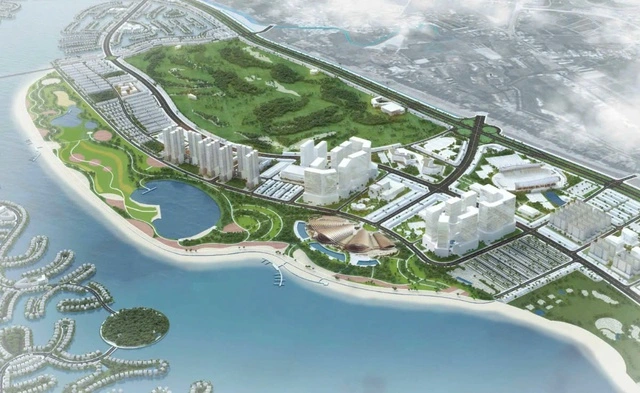

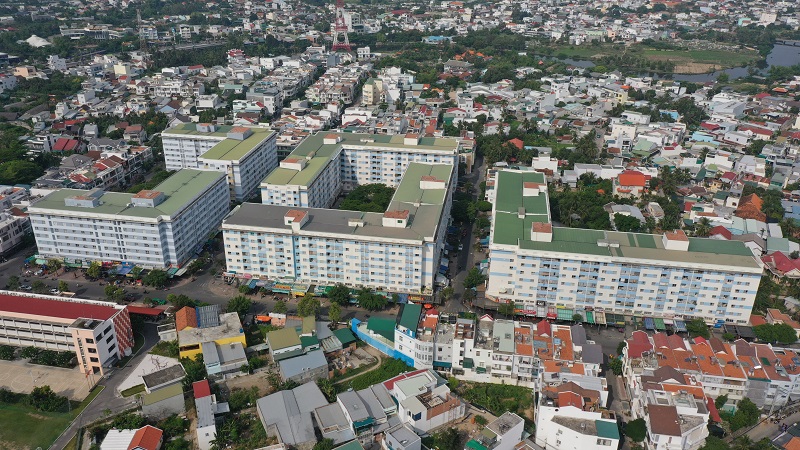


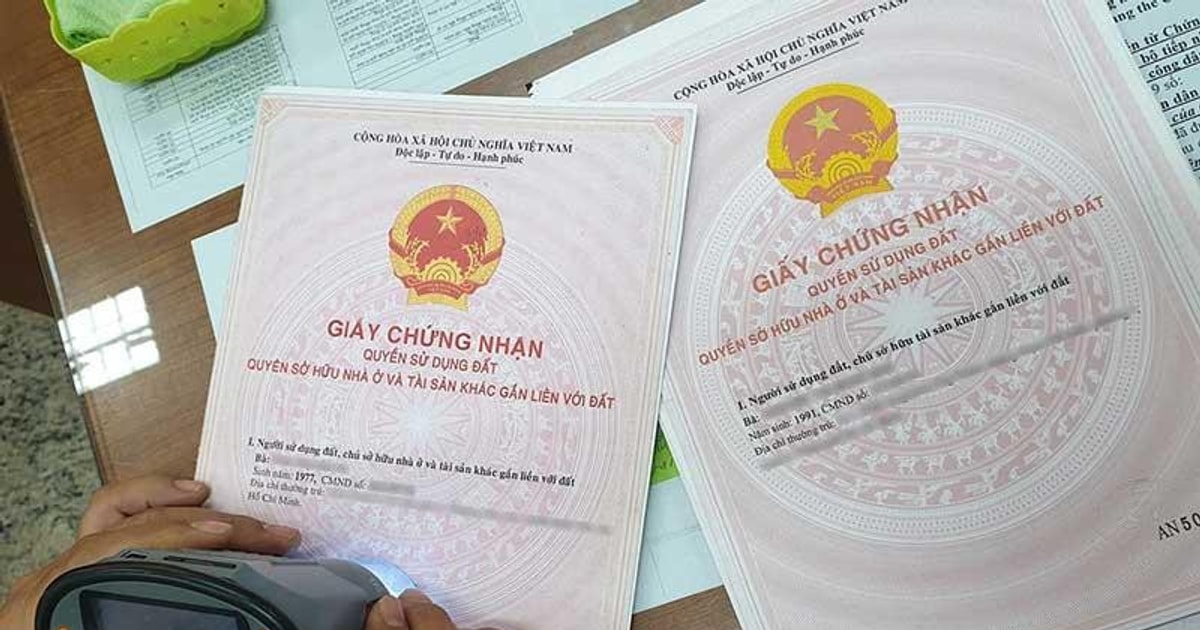
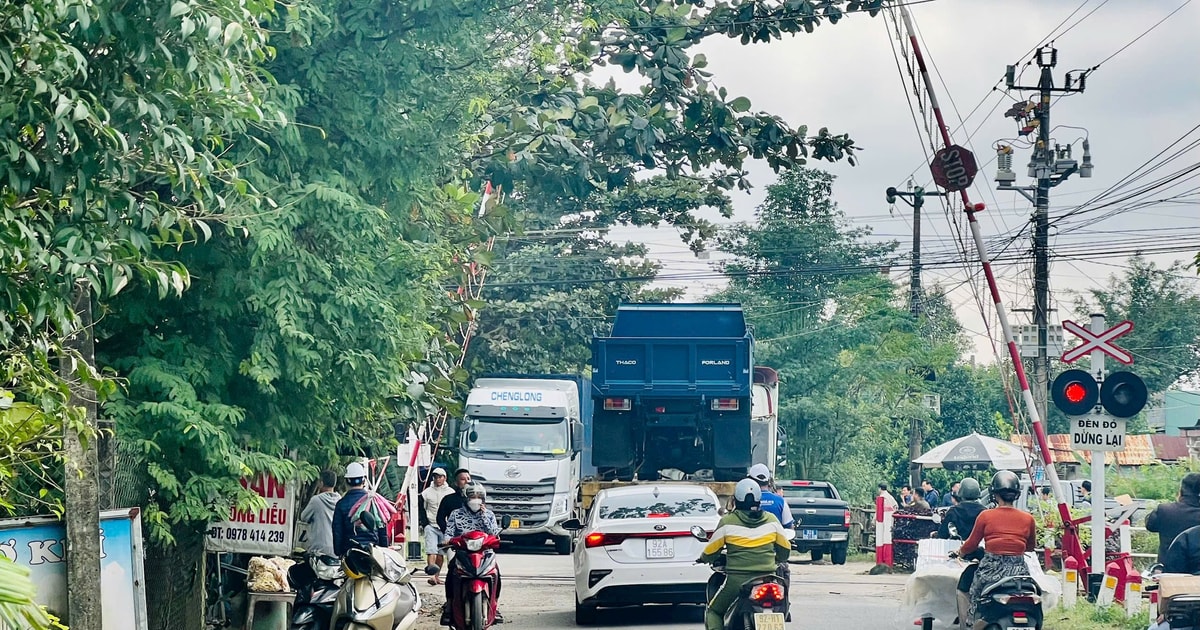
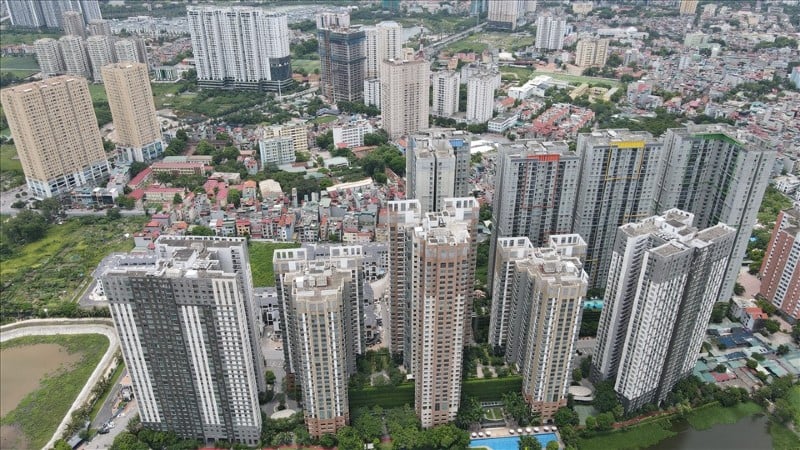



















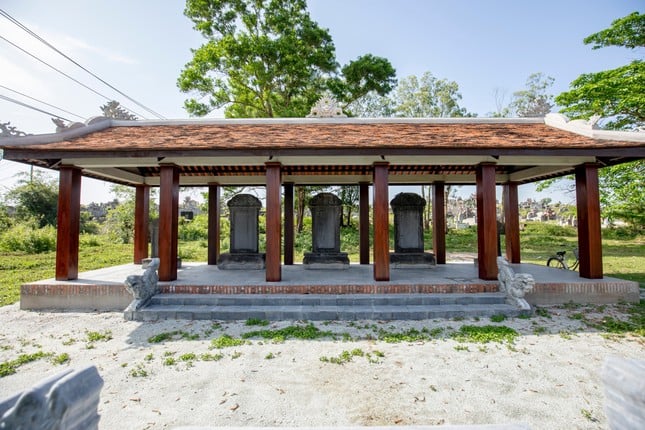




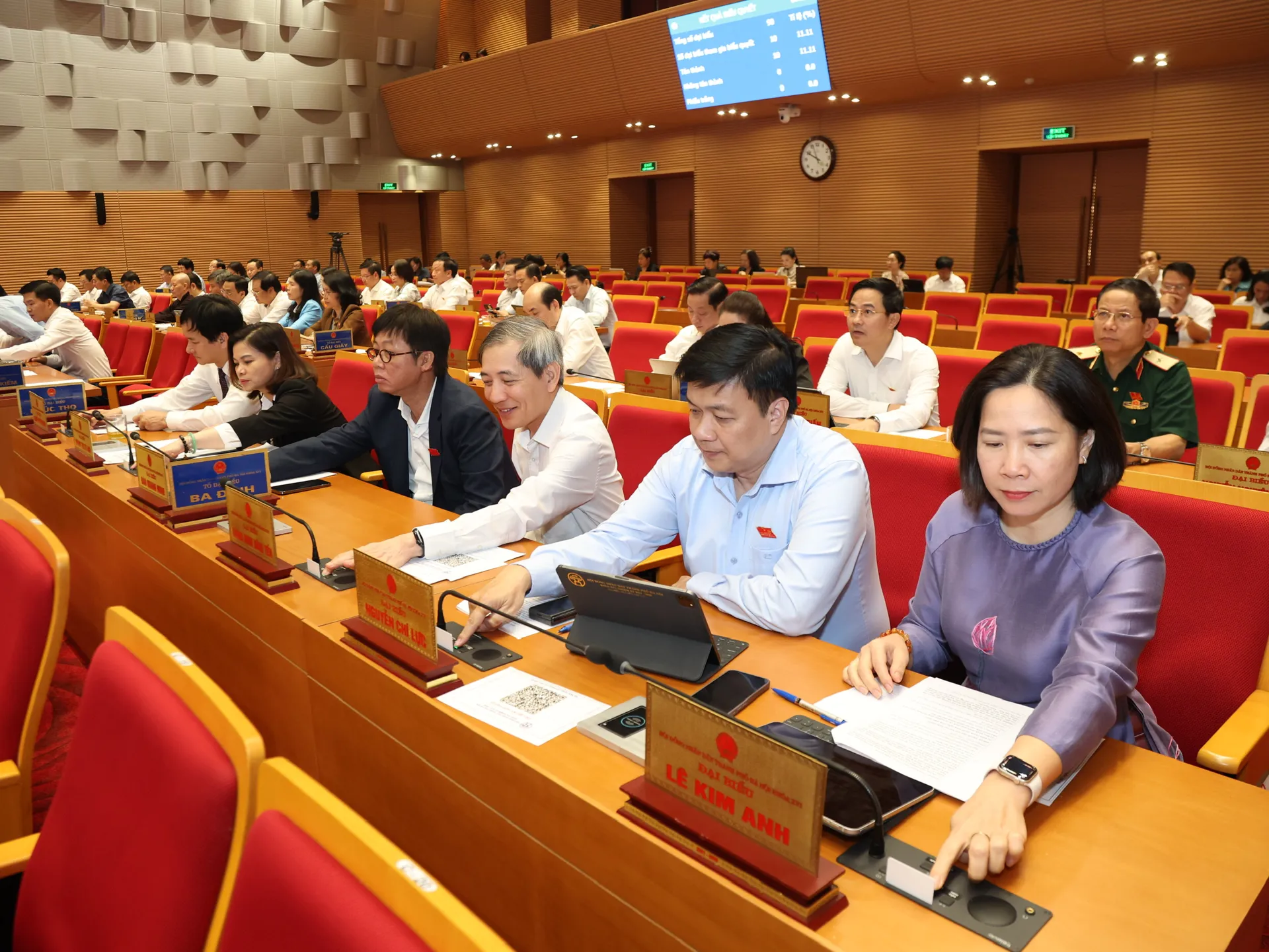




















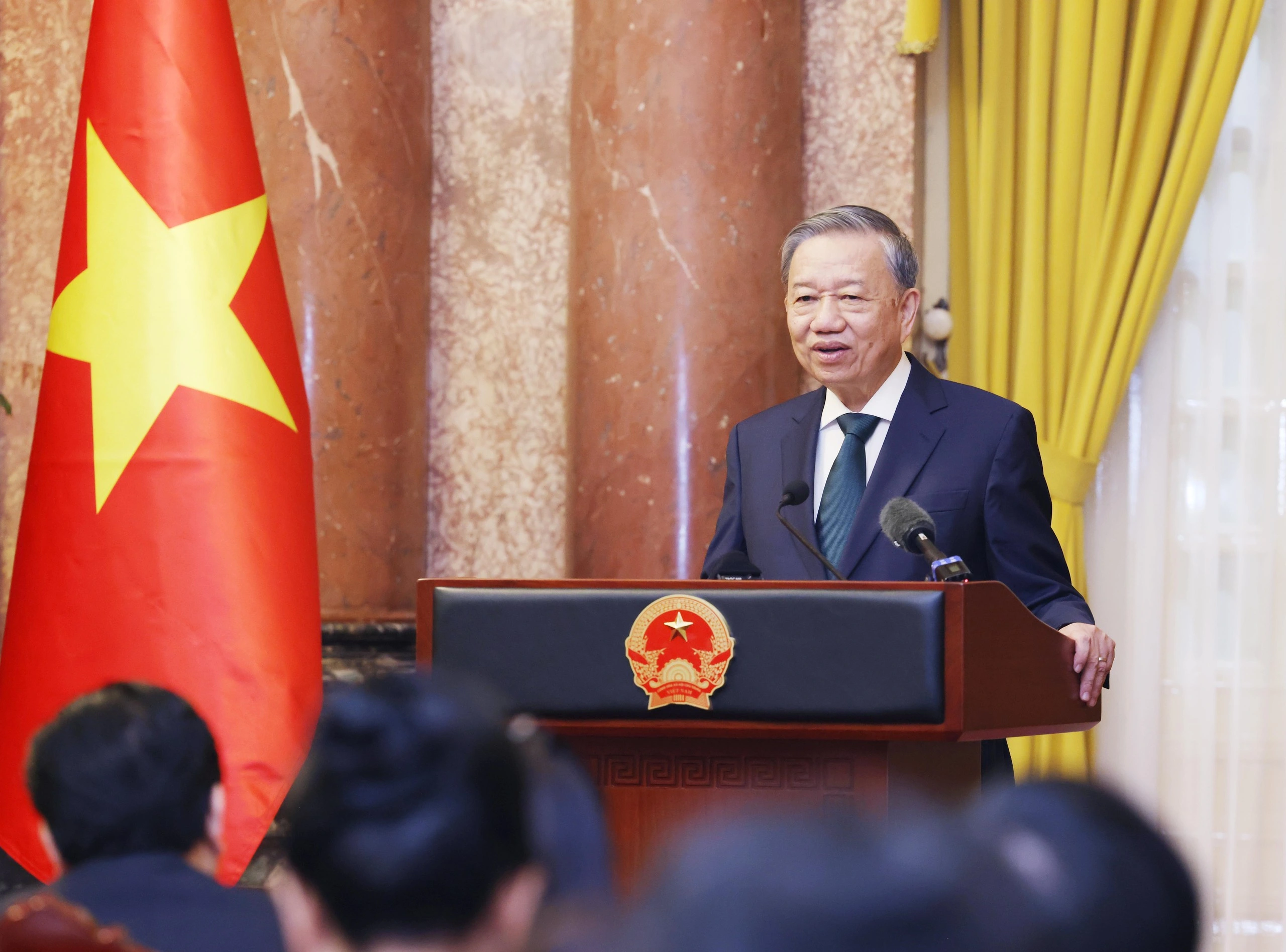
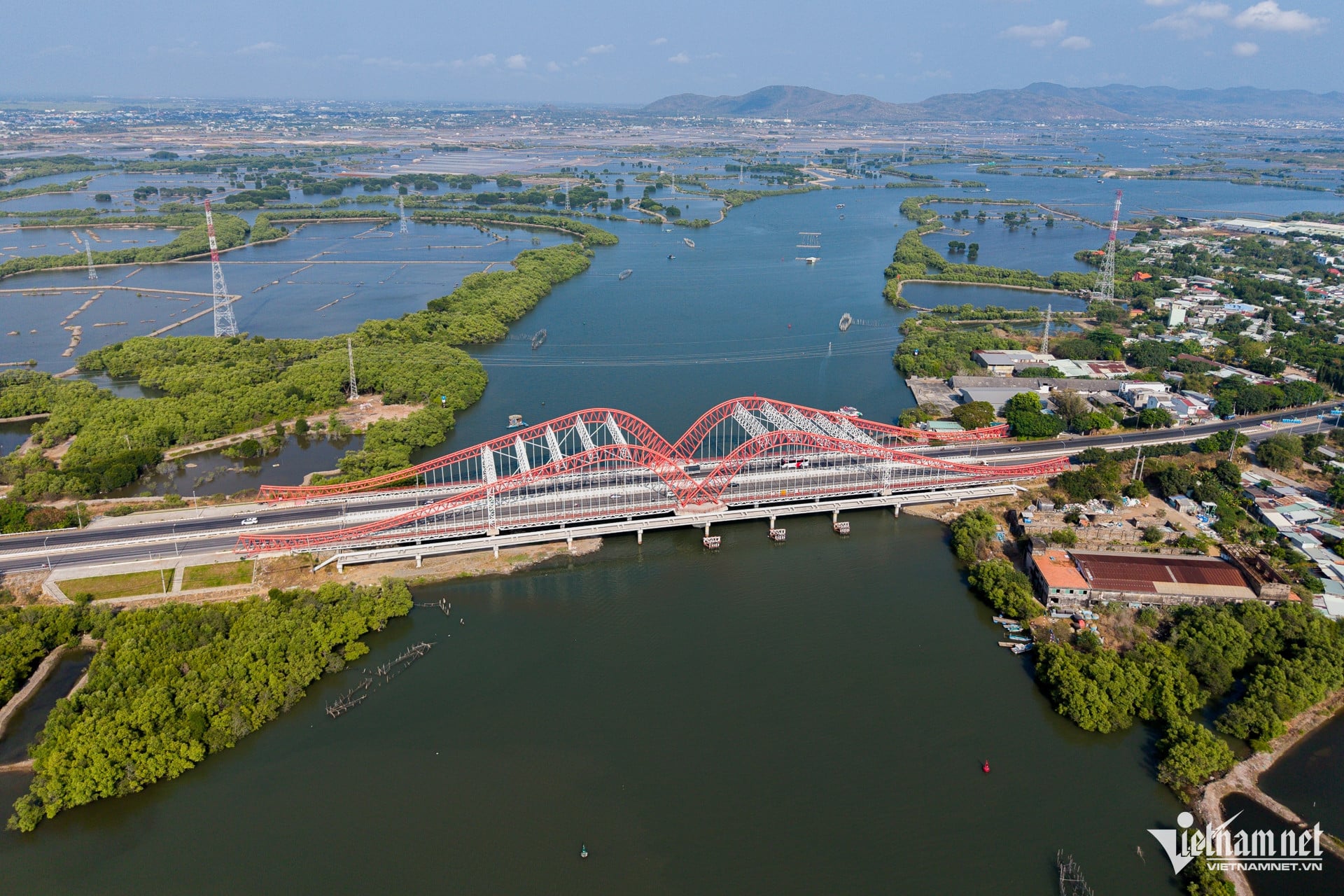




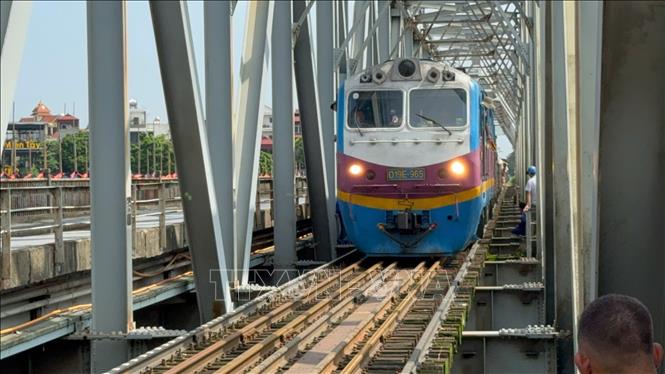

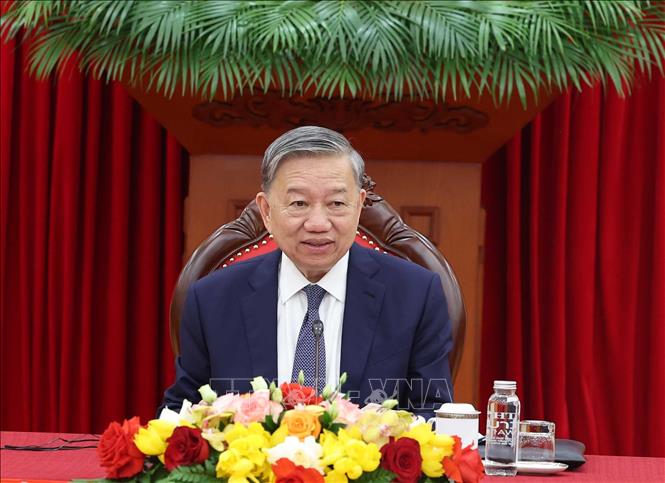






























Comment (0)